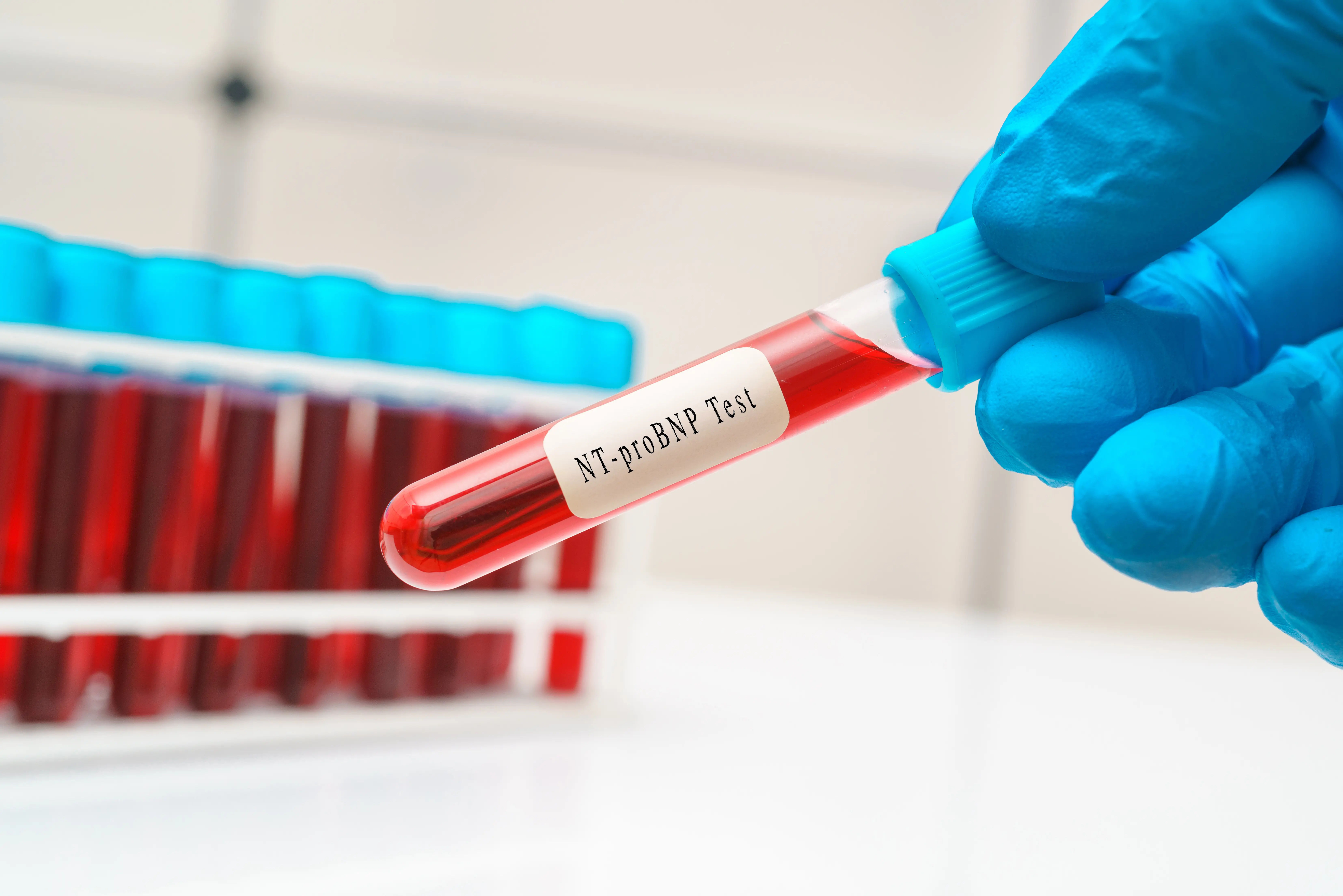Signs Of Prostate Disease
Learn the key signs of prostate disease, including urinary issues, pain, and sexual dysfunction. Discover symptoms of BPH, prostatitis, and prostate cancer, plus when to seek medical help.


Introduction
Your prostate health is a critical component of your overall well-being, yet its issues are often shrouded in silence and misunderstanding. Nestled deep within the male body, this small, walnut-sized gland can cause significant problems as men age. Recognising the signs of prostate disease early is the most powerful step toward effective treatment and maintaining your quality of life. Problems ranging from a simple, non-cancerous enlargement to inflammation or cancer can manifest through similar, often confusing symptoms. This guide will demystify these signals, helping you understand what your body might be telling you. We'll break down the different types of prostate disease, their specific symptoms, and the crucial steps to take if you recognise any of these warning signs. Knowledge is your first line of defense—let's empower you with it.
Understanding Your Prostate Gland
What is the Prostate and What Does It Do?
The prostate is a part of the male reproductive system located just below the bladder and in front of the rectum. It wraps around the urethra, the tube through which urine and semen exit the body. Its primary function is to produce fluid that nourishes and transports sperm during ejaculation. Because of its strategic location, when the prostate becomes enlarged or inflamed, it directly impacts urinary and sexual function, leading to the most common symptoms of prostate issues.
Consult a Urologist for the best advice
The Three Main Types of Prostate Disease
Prostate problems generally fall into three categories, each with distinct causes but often overlapping symptoms.
Benign Prostatic Hyperplasia (BPH) - The Enlarged Prostate
BPH is a non-cancerous enlargement of the prostate gland that is incredibly common as men age. By age 60, over 50% of men have BPH, and by 85, that figure rises to 90%. It's a natural part of aging for most men. The enlarging gland squeezes the urethra, like pinching a garden hose, leading to a variety of obstructive urinary symptoms. It is important to understand that having BPH does not increase your risk of developing prostate cancer, though they can coexist.
Prostatitis - The Inflamed Prostate
Prostatitis refers to the swelling and inflammation of the prostate, often causing painful urination and pelvic discomfort. Unlike BPH, it frequently affects younger and middle-aged men. It can be caused by a bacterial infection (acute or chronic bacterial prostatitis) or, more commonly, by an unknown source of inflammation (chronic pelvic pain syndrome, or CPPS). Symptoms can appear suddenly and be severe, resembling a urinary tract infection.
Prostate Cancer - Abnormal Cell Growth
Prostate cancer is one of the most common cancers among men. It occurs when cells in the prostate gland mutate and multiply uncontrollably, forming a tumor. In its early stages, it often grows slowly and may cause no symptoms. However, as it advances, it can cause symptoms similar to BPH. Early detection through screening is vital for successful treatment, as advanced prostate cancer that has spread beyond the prostate gland is much more difficult to treat.
Common Signs and Symptoms of Prostate Problems
The body sends signals when something is amiss with the prostate. While symptoms can vary, here are the most common red flags.
Urinary Symptoms: The Most Common Red Flags
These are often the first and most noticeable signs of a prostate problem.
Obstructive Symptoms
These occur because an enlarged prostate blocks the flow of urine.
- Weak or Interrupted Urine Stream: The flow of urine is noticeably weaker or stops and starts multiple times.
- Straining to Urinate: Needing to push or strain your abdominal muscles to start and maintain urination.
- Dribbling at the End of Urination: Leaking urine after you think you've finished.
- Incomplete Emptying: The feeling that your bladder isn't fully empty after urination.
Irritative Symptoms
These are caused by the bladder muscle becoming overworked as it tries to push urine past the obstruction.
- Frequent Urination: Needing to urinate more often than usual, especially during the day (a key sign of an enlarged prostate).
- Urgency: A sudden, strong, and sometimes uncontrollable need to urinate immediately.
- Nocturia: Frequently waking up from sleep to urinate, often two or more times a night.
Pain and Discomfort
Pain can be a significant indicator, especially for prostatitis.
- Pain or Burning During Urination (Dysuria): A classic sign of infection or inflammation.
- Painful Ejaculation: Discomfort or pain during or after orgasm.
- Pelvic, Groin, or Lower Back Pain: A dull ache or pressure in these areas.
- Rectal Pain or Pressure: A feeling of fullness or pain in the rectum.
Sexual Dysfunction and Related Symptoms
- Erectile Dysfunction (ED): Difficulty achieving or maintaining an erection.
- Blood in Semen (Hematospermia): While often alarming, it can be caused by inflammation (prostatitis) or a recent prostate procedure. However, it should always be evaluated by a doctor to rule out other causes.
- Decreased Libido: A reduced interest in sexual activity.
Advanced Symptoms: When the Disease Has Spread
In advanced prostate cancer, particularly if it has metastasized to the bones, symptoms may include:
- Bone pain (often in the spine, hips, or ribs), which may be constant or intermittent.
- Unexplained weight loss and fatigue.
- Swelling in the legs or feet.
Differentiating Between BPH, Prostatitis, and Cancer
Symptom Overlap and Key Differences
This is where confusion often arises. All three conditions can cause urinary frequency, urgency, and a weak stream. However, key differences can offer clues:
- Pain/Fever: Prostatitis is most associated with pain—during urination, in the pelvis, or with ejaculation. Acute bacterial prostatitis often comes with a fever and chills.
- Age: While possible at any age, prostatitis is more common in men under 50, while BPH and prostate cancer are more common over 50.
- Onset: BPH symptoms develop gradually over years. Prostatitis symptoms can appear suddenly and severely.
- Blood: Blood in the semen or urine is more commonly linked to prostatitis or, less commonly, cancer, but it is not a typical feature of BPH.
Crucially, you cannot self-diagnose based on symptoms alone. Only a medical professional can determine the root cause.
When to See a Doctor: Don't Delay Evaluation
You should consult a doctor if you experience any of the symptoms mentioned above. Specifically, seek immediate medical attention if you:
- Are completely unable to urinate (acute urinary retention).
- Experience painful, frequent, and urgent urination accompanied by fever and chills.
- Notice blood in your urine or semen.
Even if your symptoms are mild, early evaluation is key. If symptoms like frequent nighttime urination or a weak stream persist beyond two weeks, consult a doctor online with Apollo24|7 for further evaluation. They can provide an initial assessment and guide you on the next steps.
Diagnosing Prostate Disease: What to Expect
A proper diagnosis typically involves a combination of the following:
The Digital Rectal Exam (DRE)
The doctor inserts a gloved, lubricated finger into the rectum to feel the prostate. This allows them to assess its size, shape, and texture and check for any hard lumps or areas of abnormality.
The PSA Blood Test
The prostate-specific antigen test measures the level of PSA, a protein produced by the prostate, in your blood. An elevated PSA level can indicate prostate disease (BPH, prostatitis, or cancer), but it is not a definitive test for cancer. Apollo24|7 offers convenient home collection for tests like PSA, making initial screening more accessible.
Further Investigations: Imaging and Biopsy
If initial tests suggest an issue, a urologist may recommend:
- Urine Test: To check for infection.
- Transrectal Ultrasound: An imaging probe inserted into the rectum to get a detailed picture of the prostate.
- MRI Fusion Biopsy: An advanced technique that uses MRI imaging to precisely guide tissue sampling.
- Prostate Biopsy: The only definitive way to diagnose prostate cancer, where small tissue samples are taken from the prostate and analysed.
Proactive Prostate Health: Prevention and Monitoring
Diet and Lifestyle Choices for a Healthy Prostate
While not all prostate issues are preventable, a healthy lifestyle can reduce risk and support overall function.
- Diet: Focus on a heart-healthy diet rich in fruits, vegetables (especially lycopene-rich tomatoes), and healthy fats (like those in fish). Limit red meat and high-fat dairy.
- Exercise: Regular physical activity can help manage weight and reduce the risk of BPH and aggressive prostate cancer.
- Healthy Weight: Obesity is a risk factor for BPH and prostate cancer.
The Importance of Regular Screenings
The decision to get screened for prostate cancer with a PSA test is a personal one that should be made in discussion with your doctor, considering your age, family history, and overall risk factors. For most men, this discussion should start at age 50, or earlier (age 40-45) if you have a family history or are of African-American descent.
Conclusion
Recognising the signs of prostate disease is the first and most crucial step toward preserving your health and quality of life. While symptoms like getting up at night to urinate or a slower stream can be dismissed as a normal part of aging, they are your body's way of asking for attention. Whether it's a treatable condition like BPH or prostatitis or a more serious diagnosis like prostate cancer, modern medicine offers a wide range of effective treatments, especially when caught early. Empower yourself with knowledge, listen to your body, and prioritise open communication with your doctor. If your condition does not improve after trying lifestyle methods, or if you have any concerning symptoms, book a physical visit to a urologist with Apollo24|7 for a comprehensive evaluation. Taking action today can ensure your health and well-being for years to come.
Consult a Urologist for the best advice
Consult a Urologist for the best advice

Dr Anupam Sharma
Urologist
18 Years • MBBS, MS(Gen Surgery), DNB (Urology)
Delhi
Apollo Hospitals Indraprastha, Delhi

Dr. Varun Kumar Katiyar
Urologist
12 Years • MBBS, MS SURGERY, MCh Urology and Renal Transplant (Gold medallist)- PGIMER Dr RML Hospital, New Delhi MS Surgery (UCMS, Delhi) MBBS(MAMC, Delhi)
Noida
Apollo Hospitals Sector 26, Noida
(50+ Patients)
Dr. Mohammed Rehan Khan
Urologist
8 Years • MBBS, MS (General Surgery), Mch (Urology)
Barasat
Diab-Eat-Ease, Barasat
Dr. J Chaithanya
Urologist
6 Years • MBBS MS GENERAL SURGERY MCH UROLOGY
Bengaluru
Apollo Medical Center, Marathahalli, Bengaluru

Dr. Venkateshwara Rao K
Urologist
14 Years • MBBS,MS (General Surgery).Mch (Urology)
Bengaluru
Apollo Medical Center, Marathahalli, Bengaluru
Consult a Urologist for the best advice

Dr Anupam Sharma
Urologist
18 Years • MBBS, MS(Gen Surgery), DNB (Urology)
Delhi
Apollo Hospitals Indraprastha, Delhi

Dr. Varun Kumar Katiyar
Urologist
12 Years • MBBS, MS SURGERY, MCh Urology and Renal Transplant (Gold medallist)- PGIMER Dr RML Hospital, New Delhi MS Surgery (UCMS, Delhi) MBBS(MAMC, Delhi)
Noida
Apollo Hospitals Sector 26, Noida
(50+ Patients)
Dr. Mohammed Rehan Khan
Urologist
8 Years • MBBS, MS (General Surgery), Mch (Urology)
Barasat
Diab-Eat-Ease, Barasat
Dr. J Chaithanya
Urologist
6 Years • MBBS MS GENERAL SURGERY MCH UROLOGY
Bengaluru
Apollo Medical Center, Marathahalli, Bengaluru

Dr. Venkateshwara Rao K
Urologist
14 Years • MBBS,MS (General Surgery).Mch (Urology)
Bengaluru
Apollo Medical Center, Marathahalli, Bengaluru
More articles from General Medical Consultation
Frequently Asked Questions
1. What is the most common first sign of prostate problems?
The most common early signs are changes in urinary habits, specifically frequent urination at night (nocturia) and a weaker urine stream. These are often the first indicators of an enlarging prostate.
2. Can an enlarged prostate affect bowel movements?
While less common than urinary symptoms, a significantly enlarged prostate can sometimes put pressure on the rectum, potentially leading to constipation or a feeling of incomplete bowel emptying. However, bowel changes are more likely caused by other issues and should be discussed with a doctor.
3. Does frequent urination always mean prostate cancer?
No, not at all. Frequent urination is far more commonly caused by benign prostatic hyperplasia (BPH) or prostatitis. While it can be a symptom of prostate cancer, it is usually not the only one. This is why a proper medical evaluation is essential.
4. How can I check my prostate myself?
You cannot effectively check your prostate yourself. The prostate is located internally and requires a physical examination by a healthcare professional, specifically a digital rectal exam (DRE), to assess its size, shape, and texture for abnormalities.
5. Are prostate problems hereditary?
There is a genetic component, particularly for prostate cancer. If you have a close relative (father, brother) who has prostate cancer, your risk is about two to three times higher. A family history of BPH may also slightly increase your risk of developing it.




